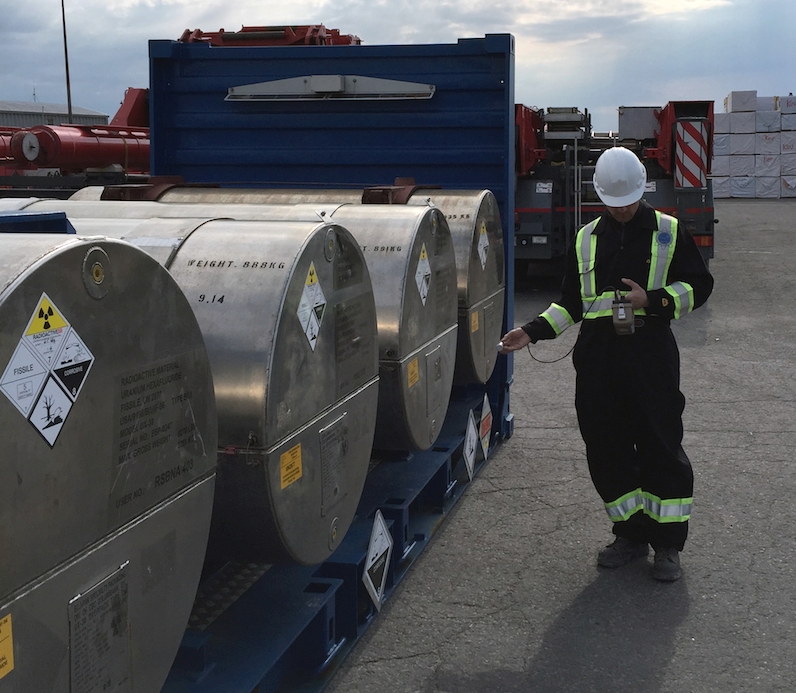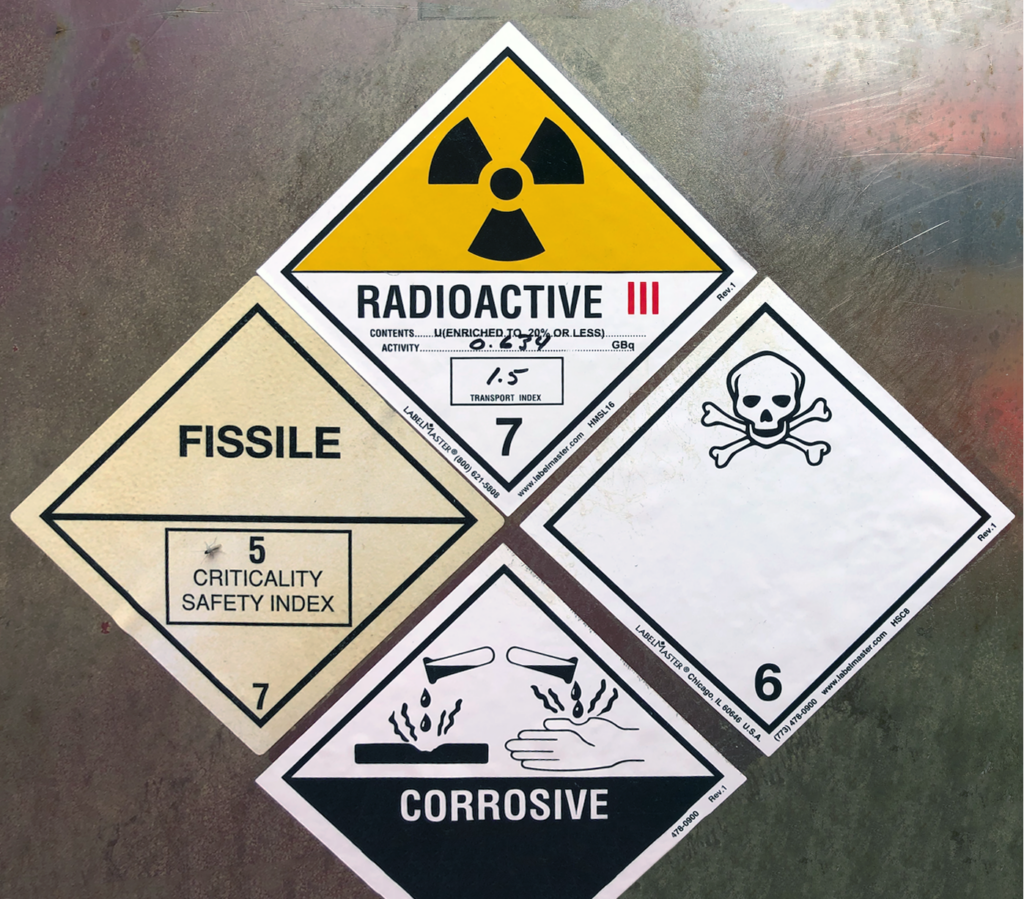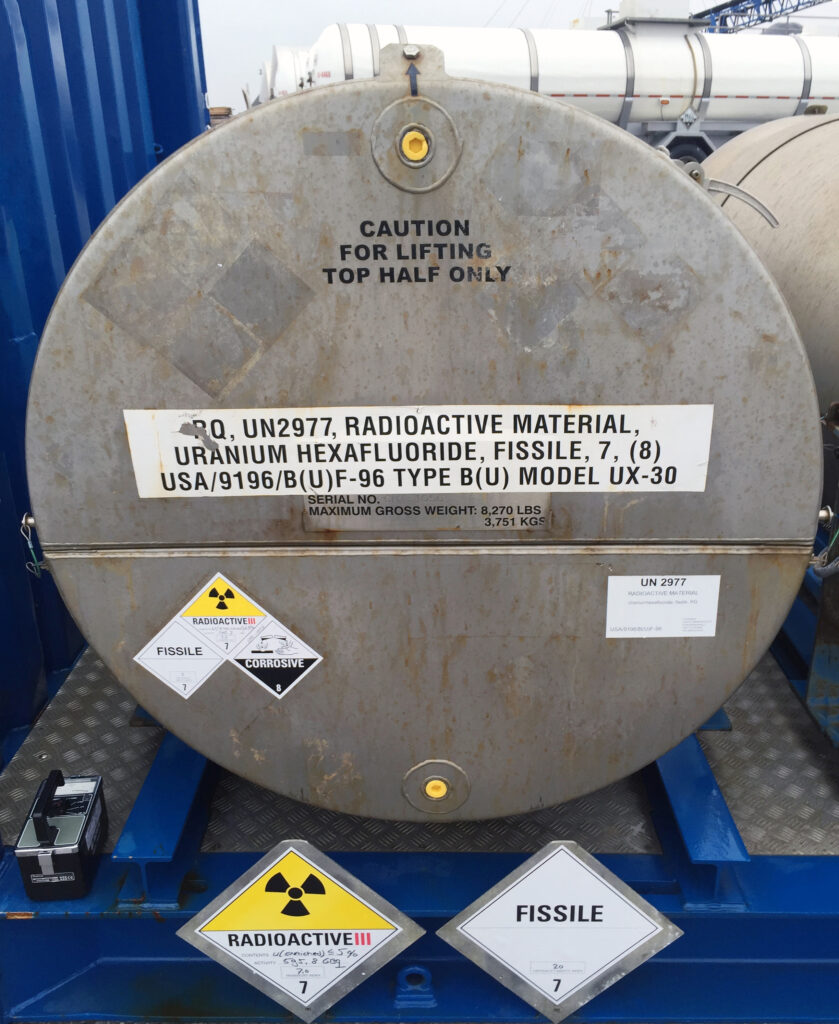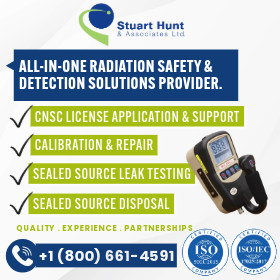Indexes: Useful Clues for Laypersons
Following is another article in a series regarding radiation safety officer (RSO) tips and tricks from a veteran RSO with 27 years of experience in various fields, including medical, research, and industrial.
How can you assess if a person is properly trained for transportation of dangerous goods (TDG), Class 7?
Ask that person to explain the concept of transport indexes (TIs).
How can you tell if an RSO has too much time on his hands?
He writes an article on indexes!
First of all, to defend all the TDG trainers who may be doing a perfectly good job of trying to explain transport indexes, if we relied solely on the process to determine a transport index (TI) as written by the International Atomic Energy Agency (IAEA) Regulations for the Safe Transport of Radioactive Material (No. SSR-6, Rev. 1, 2018), we would be doomed!
Paragraph 523 tells you to, “Determine the maximum dose rate in units of millisieverts per hour (mSv/h) at a distance of 1 metre from the external surfaces of the package . . .” (Here I go again, talking about units and orders of magnitude.)
How often, in your life so far, have you stood 1 metre from a dangerous goods package that presents, say, 1/10 of 1 mSv/h of dose? All the time? Really? Good for you and your annual dose, but I doubt this is the reality for the majority of TDG consignors.
The reality is, we don’t really know how many class 7 packages are being sent in Canada. That being said, with the new requirements from Transport Canada, we may have a better picture of what type of packages are being shipped. (But that is another story[1] that will concern you soon, I promise.)
When you think about it, the millisievert is such a big unit in relation to most of our Class 7 packages that IAEA is asking you to multiply the value you read in mSv/h by 100, assuming, of course, that your meter is not auto-scaled or is not presenting a display in microsieverts per hour (µSv/h) or in millirem per hour (mrem/h)!
We’ve been having this fascinating discussion about units to demonstrate that indexes bear no units!
An index bears no units
An index has no units because, most of the time, it indicates a physical property that cannot be measured directly. As a concrete example, let’s talk about two indexes that many Canadians know too well—the wind chill index and the humidex.
Montrealers are experts in both of these indexes, which can range somewhere between 40 and −40 in the same year! Please note: both are reported without units.
According to Environment Canada,[2] if the wind blows at 65 kilometres per hour (km/hr) and the thermometer reads −22°C, the wind chill index will be −40, which represents “feeling like” −40°C to the skin (if there was no wind).
Conversely, if the same thermometer reads 30°C and the dew point is 23°C, the humidex is 40, which feels very much like a tropical forest.
The wind chill index and humidex are very much like a feeling. No instrument will read these indexes; instruments will only read the temperature, the wind speed, or the relative humidity of the air.
A TDG trainer can compare these indexes to the TI used for Class 7 dangerous goods. If you read a maximum of 0.02 mSv/h at 1 metre from a package, you might expect that the package has a TI of 2.0. That would be true for the vast majority of Class 7 packages, such as radiopharmaceuticals, portable nuclear gauges, or exposure devices.[3] But, is that always the case? No.
The second characteristic of indexes—since they bear no units—is that they must obey fixed rules and standards. So, we need to understand the rules governing TIs. Let’s see how it works using figure 1 as an example.

Figure 1: Radioprotection Inc’s health physicist surveying a UN2977 package at a port.
Transport indexes (like any other indexes) obey a rule
The majority of packages will follow the rule of the highest value at 1 metre; that is, the maximum reading in milliSievert per hour divided by 100. I’m keeping in mind IAEA’s paragraph 523, which is really just an SI[4] unit “façade.”
We all know that:
- The majority of survey meters read/report in units of “mrem/h” or “µSv/h” not “mSv/h.”
- 1 milliSievert/h is 100 mrem/h.
The bottom line is that a TI is essentially a measured value in millirem/h at a distance of 1 metre, without writing the units. Simple.
Conversely, it is implicitly understood by the majority of RSOs that when they see TI = 1.5 (as shown in figure 2) they can expect a reading of 1.5 millirems/h or 15 µSv/h at 1 metre. Many experts would take this information for granted. But it might be more complicated.
You see, a TI is not a dose conversion factor. (Bear with me.) Most of the time, your conversion will work, in the same way that 473 ml of dark beer is a US liquid pint, but we may receive more satisfaction from an imperial pint, which is 568 ml. Who is right? I’ll leave that for beer aficionados to debate over a pint.
For TIs, however, we need to refer to the complete regulations.

Figure 2: One of the four Type-B containers from figure 1 bears a TI of 1.5.
Figure 2 represents a uranium hexafluoride (UF6) overpack made up of four Type-B packages. Should you happen to bring your survey meter within 1 metre of one of the packages, you would read about 1.5 µSv/h! Is it your survey meter that is out of calibration or your 1-metre distance that is way too far? Why do we read a factor of 10?
You’re a victim of your own habits and experience. The implicit rule for TIs (most of the time) is very simple and well understood—you measure a maximum dose rate reading at 1 metre and report that result by writing, in a precise way, as the higher reading inside that little box on a Class 7, Yellow category label. But, most importantly, the higher the reading, the higher the hazard—here lies the truth!
In French, the word “index” translates as indice (borrowed from Latin). According to the Merriam-Webster Dictionary, the English plural of index (as Latin people once conquered the world) may also be “indices.” But Molière (in French) would present Shakespeare (in English) with two meanings for the single word indice—it could mean “index” or “hint” (or, using another English synonym, “clue”).
This last meaning is the most relevant to our discussion regarding the factor-10 result. A TI is more a representation of a risk and a valuable “hint” for people who would be clueless with or without a survey meter!
TI is an indicator of the exposure risk
When I teach radiation safety, I always want trainees to understand the context and the reason behind a given training. The mandatory aspect for any safety training is usually not the principal reason to give a course but, sadly, may often be the first answer from many trainees!
Why do you take a safety training course? Because I have to.
Class 7 is a very special class among the nine classes of dangerous goods. It is the only class for which a perfectly good and compliant package could still present an inherent risk from a distance, due to exposure to a radiation field.
TIs arise when the package at its surface exceed 5 µSv/h. So, it has a lot to do with radiation safety, and we need TDG regulations and good practices in training about the transport of dangerous goods for the same reasons as all the other safety training—to protect people, members of the public, ourselves, workers, and first responders (when things go wrong during transportation).
Class 7 consignors and consignees are often Canadian Nuclear Safety Commission (CNSC) licensees. They have a radiation protection program that involves training and survey meters.
What about carriers? According to Canadian regulations,[5] carriers should also have a radiation protection program, but I must admit that, based on my experience, indications of an effective radiation protection program may be more difficult to find with some carriers!
Nevertheless, carriers must understand and be accountable for the TI concept. When they look at a package, use of a Class 7 category label (White-I, Yellow-II or III) will influence the interpretation of risk by a person who may not have a survey meter handy while the package is in transit (transport warehouse, delivery truck, maritime port, ship, train, etc.).
For this exact reason, regulation is very much concerned with the representation of risk. For example, asking the shipper to add up all TI values for an overpack or to use multiplication factors, basically to “influence” the value of a TI and the perceived risk (that feeling we discussed earlier).
TI is therefore more an indicator of the exposure risk than the exact dose rate value. With the UN2977 example, the initial TI obtained by measurement will have to be multiplied by a factor of ten,[6] as the total container size of the load (largest cross-sectional area of the load being measured) is more than 20 square metres. Therefore, we now understand why a TI of 1.5 originates from a field reading of only 1.5 µSv/h instead of 15 µSv/h!
Furthermore, the total index of the overpack is the addition of the four TIs from each single type-B package.[7]

Figure 3: One of the four Type B containers in an overpack.
In figure 3, we can see that the placard represents a TI of 7. Imagine now that you see this on a truck that is in a precarious position in a ditch along the highway. Because of your radiation protection knowledge, you are likely to “feel the heat” of a TI value of 7 even from a distance, the same way you would feel the heat of a humidex of 40 from the comfort of your air-conditioned emergency vehicle.
Your first thought is 70 µSv/h at 1 metre, which is a serious dose rate for an intact package. So, the TI does play its role here—at the accident scene, you will be acting as if you could be exposed to, at least, 70 µSv/h. But your survey meter may tell you another story.
Understanding UN2977, you might know that each container will act as high-density shielding (uranium) from the other containers. Adding the TI values, as required by regulations, is simply an overly conservative way of assessing an exposure situation.
For curious readers: we may, in a regular situation, read anywhere between 0.5 µSv/h at 1 metre and 7 µSv/h at 1 metre for similar overpacks, depending on
- where you take the 1-metre reading,
- the level of enrichment of the product,
- the activity, etc.
Not a big deal, as internal risk (risk of ingestion or inhalation) is more likely to be an issue than the external risk (usual exposure risk from a radiation) for a damaged package.
So much for the important role TIs play during an emergency. Most of the time, TIs will be an obvious warning in transit and protect regular workers who are handling or transporting Class 7 packages on a daily basis. For example, in a vehicle that is not under exclusive use,[8] one can’t have packages representing a cumulative TI of more than 50.[9] So, having 51 packages bearing TI=1 is forbidden in a vehicle but allowed in a cargo aircraft.
We also expect that a trained individual will store packages with an elevated TI far away from the driver. For example, the delivery person will use a cart to bring a 2 kg Yellow-III package (TI between 1 and 10) to a consignee or an end user, as the surface and 1-metre readings may be very high.
The proper use of TIs
Indexes are important as they represent a valuable source of information that will influence behaviours. In the same way that wind chill calls for an extra scarf to protect visible skin on your face, high TIs will call for extra distance from the package.
A TDG trainer should ensure trainees understand the role of a TI in their daily work. A TI is not just a recipe or a dose conversion factor that we apply automatically in everyday situations. Users must understand the underlying clues the TI is trying to provide.
For instance, a portable gauge with a defective shutter or a radiopharmaceutical package with a spilled inner package may have to be transported for repair or disposal. It will have a higher TI than usual. So, it’s very important not to use the same transport documents simply out of habit.
In my practice, we have seen portable gauges that are 25+ years old that bear the same transport index and paperwork as when they were brand new. The reader should understand that Cs-137, which is the main reason for using a TI, has a 30 year half-life.
TIs must be validated and confirmed when an unusual situation occurs. In such situations, using an outdated TI on a label and shipping document would not only represent a non-compliance (or a potential administrative monetary penalty, as recently reported[10]), but the TI would fail to carry out its primary role—to communicate the correct clues to protect uninformed workers.
And protecting workers is the main reason we do things the way we do.
[1] Canada Gazette :Regulations Amending the Transport of Dangerous Goods Regulations (Registration Database) : https://canadagazette.gc.ca/rp-pr/p1/2022/2022-06-25/html/reg2-eng.html
[2] How to estimate wind chill values.
[3] For readers with limited knowledge of Canadian regulations: exposure device = industrial gammagraphy device.
[4] The International System of Units.
[5] Packaging and Transport of Nuclear Substances Regulations, 2015 (SOR/2015-145) section 31.
[6] Regulations for the Safe Transport of Radioactive Material (SSR-6, rev. 1, 2018), paragraph 523 and table 7
[7] Regulations for the Safe Transport of Radioactive Material (SSR-6, rev. 1, 2018), paragraph 524
[8] Regulations for the Safe Transport of Radioactive Material (SSR-6, rev. 1, 2018), paragraph 221— Exclusive use shall mean the sole use, by a single consignor, of a conveyance or of a large freight container, in respect of which all initial, intermediate and final loading and unloading and shipment are carried out in accordance with the directions of the consignor or consignee, where so required by these Regulations.
[9] Regulations for the Safe Transport of Radioactive Material (SSR-6, rev. 1, 2018), Table 10
[10] CNSC (2022) Regulatory Oversight Report on the Use of Nuclear Substances in Canada : 2021-draft https://www.nuclearsafety.gc.ca/eng/the-commission/meetings/cmd/pdf/CMD22/CMD22-M32.pdf
Résumé
Indices : Indications utiles pour les profanes
Comment faire pour savoir si une personne a une formation adéquate pour le transport des marchandises dangereuses (TMD) de la catégorie 7? Demandez-leur d’expliquer le concept des indices de transport (IT). Comment faire pour savoir si un responsable de la radioprotection a trop de temps libre? Il écrit un article sur les indices!
Dans sa plus récente contribution au Bulletin, Stéphane a expliqué la nature des IT, pourquoi ils sont importants et comment ils peuvent fournir des renseignements utiles qui devraient influencer les comportements pour assurer la sécurité des gens.

Stéphane Jean-François
Do you want to read more articles like this?
The Bulletin is published by the Canadian Radiation Protection Association (CRPA). It’s a must-read publication for radiation protection professionals in Canada. The editorial content delivers the insights, information, advice, and valuable solutions that radiation protection professionals need to stay at the forefront of their profession.
Sign up today and we’ll send you an email each time a new edition goes live. In between issues, check back often for updates and new articles.
Don’t miss an issue. Subscribe now!
Subscribe



